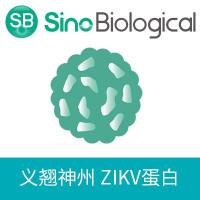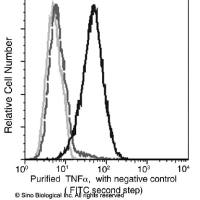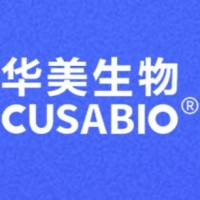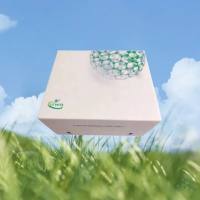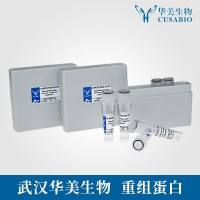Array‐Based High‐Throughput Screening in Mouse Embryonic Stem Cells with shRNAs
互联网
- Abstract
- Table of Contents
- Materials
- Figures
- Literature Cited
Abstract
High?throughput short?hairpin RNA (shRNA) lentivirus screening is a powerful tool for identifying multiple functional regulators in embryonic stem cells (ESCs). shRNA libraries can efficiently down?regulate target genes persistently with high efficiency. The concurrent measurement of relative cell number by alamarBlue (AB) assay and undifferentiated ESC markers via an alkaline phosphatase (ALP) activity assay in the same cell culture well provides an efficient and economical way to pinpoint factors crucial for ESC pluripotency and/or expansion. Most of the renewal pathways affect ALP activity. Thus, multiple positive and negative regulators can be identified by this method. In addition, morphological changes and/or the expression levels of specific pluripotency or differentiation markers examined by immunofluorescence can be used as secondary screens for target?gene selection. In summary, we describe an efficient way to identify multiple regulators of ESC renewal using shRNAs. Curr. Protoc. Stem Cell Biol . 26:5C.3.1?5C.3.19. © 2013 by John Wiley & Sons, Inc.
Keywords: embryonic stem cells; RNA interference; short?hairpin RNA; high?throughput screening
Table of Contents
- Introduction
- Basic Protocol 1: Infection of Feeder‐Free Mouse ESCs with an shRNA Lentivirus Library
- Basic Protocol 2: Select the Candidate Genes by alamarBlue Assay and Alkaline Phosphatase Assay
- Basic Protocol 3: Select the Candidate Genes Based on Morphological Changes by shRNA Infection
- Alternate Protocol 1: Select the Candidate Genes Based on Morphological Changes by Transfection
- Alternate Protocol 2: Selecting Candidate Genes by Immunofluorescence Assay
- Reagents and Solutions
- Commentary
- Literature Cited
- Figures
Materials
Basic Protocol 1: Infection of Feeder‐Free Mouse ESCs with an shRNA Lentivirus Library
Materials
Basic Protocol 2: Select the Candidate Genes by alamarBlue Assay and Alkaline Phosphatase Assay
Materials
Basic Protocol 3: Select the Candidate Genes Based on Morphological Changes by shRNA Infection
Materials
Alternate Protocol 1: Select the Candidate Genes Based on Morphological Changes by Transfection
Materials
Alternate Protocol 2: Selecting Candidate Genes by Immunofluorescence Assay
Materials
|
Figures
-
Figure 5.C0.1 Differentiation of ESCs leads to morphological changes. Examples of undifferentiated ESCs (left panel), partially differentiated ESCs (middle panel), and differentiated ESCs (right panel) are shown. This figure is adapted from Wang et al. (). View Image -
Figure 5.C0.2 Examples of the ALP/AB ratio in a shRNA screen and target gene selection. Candidate genes identified with two independent shRNAs with Z‐scores for the ALP/AB ratio less than −1.5 or more than 1.5 may be viewed as positive or negative regulators of ESC renewal. For example, PI3K, Nme6, and Nme7, each of which have two independent shRNAs with Z‐scores that are lower than −1.5, were identified as positive regulators. This figure is adapted from Wang et al. (). View Image -
Figure 5.C0.3 Examples of undifferentiated, partially differentiated, and fully differentiated cells scored by the morphological changes in shRNA‐targeted ESCs. This figure is adapted from Wang et al. (). View Image -
Figure 5.C0.4 Quantification of Oct4 fluorescent signals in undifferentiated and differentiated ESCs. Indirect immunofluorescence assays were performed with anti‐Oct4 antibody in 96‐well plates and analyzed by automatic fluorescence microscopy (Cellomics). (A ) Histogram. Each dashed line represents the distribution of the intensity of Oct4 protein staining in one well. Solid line represents the average of three different wells. (B ) The quantification of fluorescence intensity. View Image
Videos
Literature Cited
| Literature Cited | |
| Ang, Y.S., Tsai, S.Y., Lee, D.F., Monk, J., Su, J., Ratnakumar, K., Ding, J., Ge, Y., Darr, H., Chang, B., Wang, J., Rendl, M., Bernstein, E., Schaniel, C., and Lemischka, I.R. 2011. Wdr5 mediates self‐renewal and reprogramming via the embryonic stem cell core transcriptional network. Cell 145:183‐197. | |
| Anneren, C., Cowan, C.A., and Melton, D.A. 2004. The Src family of tyrosine kinases is important for embryonic stem cell self‐renewal. J. Biol. Chem. 279:31590‐31598. | |
| Anoopkumar‐Dukie, S., Carey, J.B., Conere, T., O'Sullivan, E., van Pelt, F.N., and Allshire, A. 2005. Resazurin assay of radiation response in cultured cells. Br. J. Radiol. 78:945‐947. | |
| Berstine, E.G., Hooper, M.L., Grandchamp, S., and Ephrussi, B. 1973. Alkaline phosphatase activity in mouse teratoma. Proc. Natl. Acad. Sci. U.S.A. 70:3899‐3903. | |
| Brambrink, T., Foreman, R., Welstead, G.G., Lengner, C.J., Wernig, M., Suh, H., and Jaenisch, R. 2008. Sequential expression of pluripotency markers during direct reprogramming of mouse somatic cells. Cell Stem Cell 2:151‐159. | |
| Cao, F., van der Bogt, K.E., Sadrzadeh, A., Xie, X., Sheikh, A.Y., Wang, H., Connolly, A.J., Robbins, R.C., and Wu, J.C. 2007. Spatial and temporal kinetics of teratoma formation from murine embryonic stem cell transplantation. Stem Cells Dev. 16:883‐891. | |
| Chambers, I., Colby, D., Robertson, M., Nichols, J., Lee, S., Tweedie, S., and Smith, A. 2003. Functional expression cloning of Nanog, a pluripotency sustaining factor in embryonic stem cells. Cell 113:643‐655. | |
| Dejosez, M., Krumenacker, J.S., Zitur, L.J., Passeri, M., Chu, L.F., Songyang, Z., Thomson, J.A., and Zwaka, T.P. 2008. Ronin is essential for embryogenesis and the pluripotency of mouse embryonic stem cells. Cell 133:1162‐1174. | |
| Ding, L., Paszkowski‐Rogacz, M., Nitzsche, A., Slabicki, M.M., Heninger, A.K., de Vries, I., Kittler, R., Junqueira, M., Shevchenko, A., Schulz, H., Hubner, N., Doss, M.X., Sachinidis, A., Hescheler, J., Iacone, R., Anastassiadis, K., Stewart, A.F., Pisabarro, M.T., Caldarelli, A., Poser, I., Theis, M., and Buchholz, F. 2009. A genome‐scale RNAi screen for Oct4 modulators defines a role of the Paf1 complex for embryonic stem cell identity. Cell Stem Cell 4:403‐415. | |
| Elmen, J., Thonberg, H., Ljungberg, K., Frieden, M., Westergaard, M., Xu, Y., Wahren, B., Liang, Z., Orum, H., Koch, T., and Wahlestedt, C. 2005. Locked nucleic acid (LNA) mediated improvements in siRNA stability and functionality. Nucl. Acids Res. 33:439‐447. | |
| Entzeroth, M., Flotow, H., and Condron, P. 2009. Overview of high‐throughput screening. Curr. Protoc. Pharmacol. 44:9.4.1‐9.4.27. | |
| Fields, R.D. and Lancaster, M.V. 1993. Dual‐attribute continuous monitoring of cell proliferation/cytotoxicity. Am. Biotechnol. Lab. 11:48‐50. | |
| Fluiter, K., Mook, O.R., and Baas, F. 2009. The therapeutic potential of LNA‐modified siRNAs: Reduction of off‐target effects by chemical modification of the siRNA sequence. Methods Mol. Biol. 487:189‐203. | |
| Hu, G., Kim, J., Xu, Q., Leng, Y., Orkin, S.H., and Elledge, S.J. 2009. A genome‐wide RNAi screen identifies a new transcriptional module required for self‐renewal. Genes Dev. 23:837‐848. | |
| Ishiyama, M., Shiga, M., Sasamoto, K., Mizoguchi, M., and He, P. 1993. A new sulfonated tetrazolium salt that produces a highly water‐soluble formazan dye. Chem. Pharm. Bull. 41:1118‐1122. | |
| Ito, S., D'Alessio, A.C., Taranova, O.V., Hong, K., Sowers, L.C., and Zhang, Y. 2010. Role of Tet proteins in 5mC to 5hmC conversion, ES‐cell self‐renewal and inner cell mass specification. Nature 466:1129‐1133. | |
| Ivanova, N., Dobrin, R., Lu, R., Kotenko, I., Levorse, J., DeCoste, C., Schafer, X., Lun, Y., and Lemischka, I.R. 2006. Dissecting self‐renewal in stem cells with RNA interference. Nature 442:533‐538. | |
| Liang, J., Wan, M., Zhang, Y., Gu, P., Xin, H., Jung, S.Y., Qin, J., Wong, J., Cooney, A.J., Liu, D., and Songyang, Z. 2008. Nanog and Oct4 associate with unique transcriptional repression complexes in embryonic stem cells. Nat. Cell Biol. 10:731‐739. | |
| Lim, C.Y., Tam, W.L., Zhang, J., Ang, H.S., Jia, H., Lipovich, L., Ng, H.H., Wei, C.L., Sung, W.K., Robson, P., Yang, H., and Lim, B. 2008. Sall4 regulates distinct transcription circuitries in different blastocyst‐derived stem cell lineages. Cell Stem Cell 3:543‐554. | |
| Luo, B., Cheung, H.W., Subramanian, A., Sharifnia, T., Okamoto, M., Yang, X., Hinkle, G., Boehm, J.S., Beroukhim, R., Weir, B.A., Mermel, C., Barbie, D.A., Awad, T., Zhou, X., Nguyen, T., Piqani, B., Li, C., Golub, T.R., Meyerson, M., Hacohen, N., Hahn, W.C., Lander, E.S., Sabatini, D.M., and Root, D.E. 2008. Highly parallel identification of essential genes in cancer cells. Proc. Natl. Acad. Sci. U.S.A. 105:20380‐20385. | |
| Mosmann, T. 1983. Rapid colorimetric assay for cellular growth and survival: Application to proliferation and cytotoxicity assays. J. Immunol. Methods 65:55‐63. | |
| O'Brien, J., Wilson, I., Orton, T., and Pognan, F. 2000. Investigation of the Alamar Blue (resazurin) fluorescent dye for the assessment of mammalian cell cytotoxicity. Eur. J. Biochem. 267:5421‐5426. | |
| Pease, S., Braghetta, P., Gearing, D., Grail, D., and Williams, R.L. 1990. Isolation of embryonic stem (ES) cells in media supplemented with recombinant leukemia inhibitory factor (LIF). Dev. Biol. 141:344‐352. | |
| Rampersad, S.N. 2012. Multiple applications of Alamar Blue as an indicator of metabolic function and cellular health in cell viability bioassays. Sensors 12:12347‐12360. | |
| Rao, D.D., Senzer, N., Cleary, M.A., and Nemunaitis, J. 2009a. Comparative assessment of siRNA and shRNA off target effects: What is slowing clinical development. Cancer Gene Ther. 16:807‐809. | |
| Rao, D.D., Vorhies, J.S., Senzer, N., and Nemunaitis, J. 2009b. siRNA vs. shRNA: Similarities and differences. Adv. Drug Deliv. Rev. 61:746‐759. | |
| Tamm, C., Galito, S.P., and Anneren, C. 2012. Differential effects on cell motility, embryonic stem cell self‐renewal and senescence by diverse Src kinase family inhibitors. Exp. Cell Res. 318:336‐349. | |
| Tay, Y., Zhang, J., Thomson, A.M., Lim, B., and Rigoutsos, I. 2008. MicroRNAs to Nanog, Oct4 and Sox2 coding regions modulate embryonic stem cell differentiation. Nature 455:1124‐1128. | |
| ten Berge, D., Kurek, D., Blauwkamp, T., Koole, W., Maas, A., Eroglu, E., Siu, R.K., and Nusse, R. 2011. Embryonic stem cells require Wnt proteins to prevent differentiation to epiblast stem cells. Nat. Cell Biol. 13:1070‐1075. | |
| Wang, C.H., Ma, N., Lin, Y.T., Wu, C.C., Hsiao, M., Lu, F.L., Yu, C.C., Chen, S.Y., and Lu, J. 2012. A shRNA functional screen reveals Nme6 and Nme7 are crucial for embryonic stem cell renewal. Stem Cells 30:2199‐2211. | |
| Yamaji, M., Ueda, J., Hayashi, K., Ohta, H., Yabuta, Y., Kurimoto, K., Nakato, R., Yamada, Y., Shirahige, K., and Saitou, M. 2013. PRDM14 ensures naive pluripotency through dual regulation of signaling and epigenetic pathways in mouse embryonic stem cells. Cell Stem Cell 12:368‐382. | |
| Yi, F., Pereira, L., Hoffman, J.A., Shy, B.R., Yuen, C.M., Liu, D.R., and Merrill, B.J. 2011. Opposing effects of Tcf3 and Tcf1 control Wnt stimulation of embryonic stem cell self‐renewal. Nat. Cell Biol. 13:762‐770. | |
| Ying, Q.L., Stavridis, M., Griffiths, D., Li, M., and Smith, A. 2003. Conversion of embryonic stem cells into neuroectodermal precursors in adherent monoculture. Nature Biotechnol. 21:183‐186. | |
| Zhang, J.H., Chung, T.D., and Oldenburg, K.R. 1999. A simple statistical parameter for use in evaluation and validation of high throughput screening assays. J. Biomol. Screen. 4:67‐73. | |
| Zhang, W., Walker, E., Tamplin, O.J., Rossant, J., Stanford, W.L., and Hughes, T.R. 2006. Zfp206 regulates ES cell gene expression and differentiation. Nucl. Acids Res. 34:4780‐4790. |


